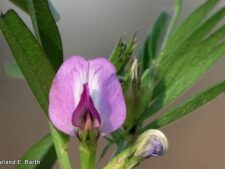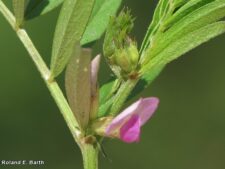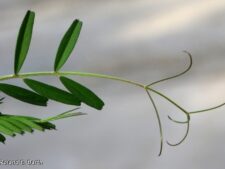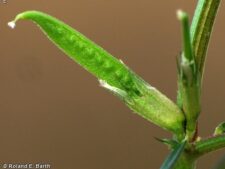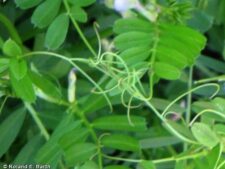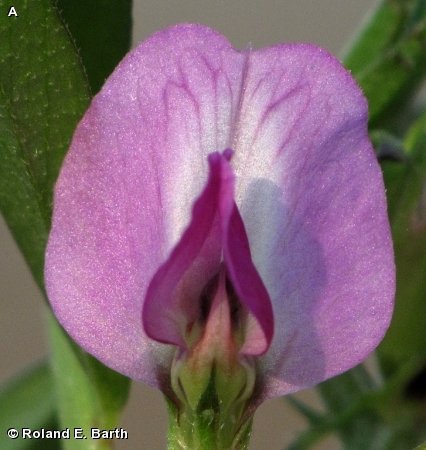
This annual vetch species has a long history of cultivation in Eurasia and was likely introduced into North America for livestock forage. As is often the case, it has escaped cultivation and is now naturalized worldwide. It has 1-2 pink/purple pea-like flowers without stalks (A,C), whereas the other possible vetches in our area have more flowers per cluster. The leaves have 5-6 pairs of leaflets, each with blunt ends, but with a sharp point at the tip (D). The leaves themselves end in tendrills which cling to other plants to form a thick mat (D,F). The fruit resembles a flat pea pod; it is shown (E), early in its development.
Rare at Fontenelle Forest where a good patch of this vetch was found in 2012 across from the floodplain parking lot. It was either planted there, or came in with the flood, perhaps from the farm nearby, where it perhaps had been planted for livestock food.
This vetch has been grown as animal feed in Europe at least as far back as Roman times.
The content of NatureSearch is provided by dedicated volunteer Naturalists of Fontenelle Forest who strive to provide the most accurate information available. Contributors of the images retain their copyrights. The point of contact for this page is: Neal Ratzlaff.

 Identification
Identification